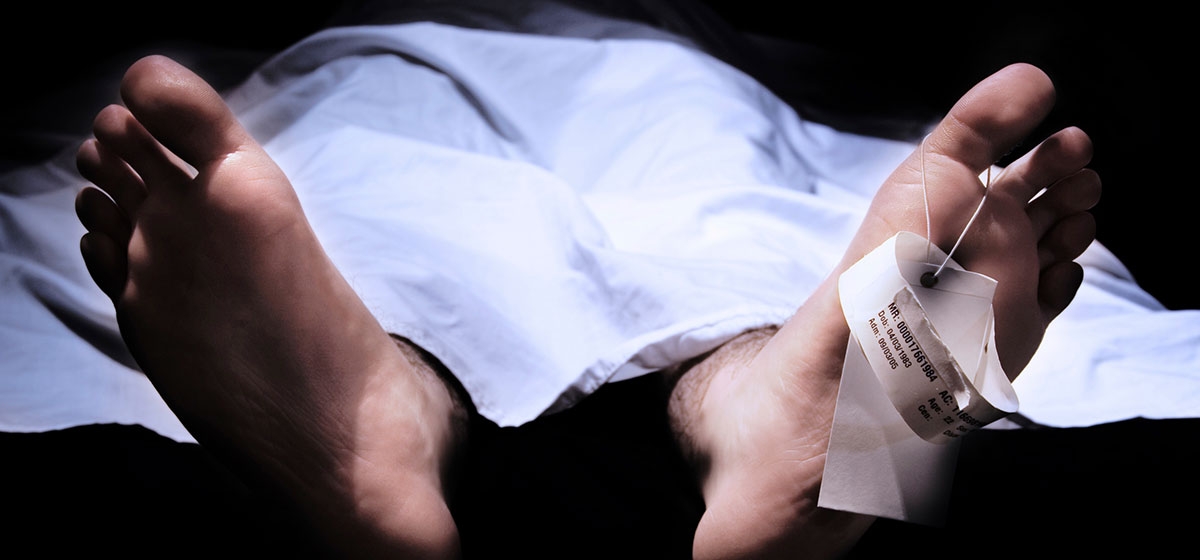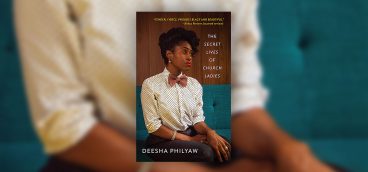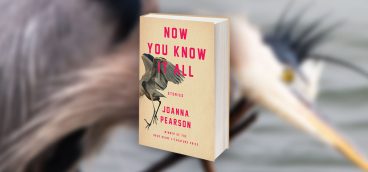
Surely one of our region’s most colorful anomalies is the phenomenon of a celebrity coroner. Where else but in Pittsburgh would proximity to corpses carry such cachet? Of course, these corpses are media sensations, and the high-profile pathologist who enjoys their reflected glory is rather sensational himself.
Former Allegheny County Coroner and sometime politician Cyril Wecht, M.D., J.D., is a prominent forensic expert whose private practice has brought him into contact with some of the most famous dead Americans of the last half-century, including John F. Kennedy and Jon Benet Ramsey. Variously described as brilliant, charismatic, arrogant and bombastic, Wecht is both revered and reviled in his hometown, usually depending upon which end of the political spectrum one occupies. His outgoing personality and outspoken pronouncements have made him a frequent guest of Larry King, Geraldo Rivera and Greta Van Susteren, even as the U.S. Attorney’s Office sought his hide for alleged misuse of public resources. Love him or hate him, Cyril Wecht makes Jack Klugman’s quirky medical examiner “Quincy” of retro television fame seem downright dull.
Over the course of his long career, Wecht has documented his most notorious cases in a number of books, including “Grave Secrets,” “Tales from the Morgue,” and “Mortal Evidence.” His most recent publication, “A Question of Murder,” is cast from the same mold, this time concentrating on the overdoses of Anna Nicole Smith and her son; two tragically victimized adolescents; and the dubious deaths of elderly patients in a New Orleans hospital in the aftermath of Hurricane Katrina.
The book’s release earlier this year was largely overshadowed by Wecht’s highly publicized legal troubles. Although all charges against him have since been dropped, suspicions of wrongdoing still linger in some quarters. For this reason it is tempting—but fruitless—to overanalyze the book by seeking clues to Wecht’s culpability. It is best to read and enjoy “A Question of Murder” for precisely what it is: a morbidly fascinating glimpse behind the façade of glamorous celebrities, happy families and caring institutions.
Wecht’s co-author, Dawna Kaufmann, is both a comedy writer and tabloid journalist specializing in homicides and missing-persons cases. Her graphic, National-Enquirer-style writing and “true crime” experience are well suited to the material, for no one could possibly fabricate tales more fantastic than these, least of all the melodrama of the doomed Smiths.
Anna Nicole Smith, neé Vickie Lynn Hogan, lived a life of grotesque excesses, from her cartoonish bustline and “modified Elvis diet” of junk food and slimming shakes to her abuse of drugs, both recreational and prescribed. Her February 2007 death at a Florida Hard Rock Hotel, resulting from a fatal mixture of prescription medications, was not entirely surprising, given the way she lived and her well-known adulation of Marilyn Monroe (another Wecht subject), who met a comparable end at approximately the same age. What is more remarkable is that it followed on the heels of the unexpected death of her quiet and upstanding 20-year-old son, Daniel Smith, from similar causes.
Three days after Anna Nicole gave birth to a second child in the Bahamas in September 2006, she awoke to discover Daniel beside her in her hospital bed, the victim of what the author calls “Sudden Adult Death Syndrome.” Ms. Smith and her confidential lawyer, Howard K. Stern, summoned Dr. Wecht, who determined the cause of death to be cardiac dysrythmia resulting from a combination of antidepressants and methadone. Daniel’s premature passing would have been tragic under any circumstances but was complicated by his position as his mother’s sole legal heir, at a time when she stood to inherit a fortune.
In 1994, on her journey from stripper to reality-TV star, Anna Nicole wed Howard Marshall, a wealthy oilman 63 years her senior, who left her widowed after 13 unconventional months of marriage. Although Marshall’s son, Pierce, was determined that his sexpot stepmother should not profit from her husband’s death, Smith and Stern had been waging a legal battle for years to claim an even share of the $1.6 billion estate. They took her case all the way to the U.S. Supreme Court, which ruled in Smith’s favor on May 1, 2006, allowing her to pursue her claim. Although the estate had not been settled at the time of Daniel’s death (and is still pending, even at this writing), Anna Nicole Smith Marshall was expected to receive approximately $450 million.
Further complicating the scenario was the questionable paternity of Anna Nicole’s infant daughter. While a Los Angeles photographer was widely believed to be the child’s natural father, the name that appeared on her birth certificate was that of Howard K. Stern, Smith’s attorney, advisor, enabler and—following a Bahamian “commitment ceremony”—her ersatz husband.
Observers of a disapproving nature might well look askance at Howard K. Stern, but Wecht portrays him in a surprisingly sympathetic light; not as Smith’s sinister Svengali, but as a nice, sincerely grieving guy whose intentions were honorable, if obscure. He leaves it to Smith’s hardboiled mother, Virgie Arthur, to assert what would seem ominously obvious. “If Howard [Stern] marries Vickie [Smith] and Daniel’s gone, that leaves Howard and the baby to inherit whatever she has,” Arthur observed, warning “Vickie Lynn, be careful who you hang around with, because you may be next.” Five months later, she was.
Despite the book’s title, the question of murder is never raised in the case of Anna Nicole Smith. The official autopsy, performed by Dr. Joshua Perper and reviewed and confirmed by Wecht, declares that Ms. Smith, like her son, died from the acute combined toxicity of multiple medications, with no evidence to suggest deliberate wrongdoing by Stern or anyone else.
By contrast, the 1998 death of Stephanie Crowe was clearly homicide; a 12-year-old girl stabbed to death in her bedroom while her family slept. Unlike the Smith case, which possesses a certain air of tragic inevitability, this case, along with that of abducted 7-year-old Danielle van Dam, is senseless, brutal and utterly terrifying to anyone who believes they are safe in their own home. These stories are truly distressing to read, not only because children were murdered, but because their families suffered additional anguish and humiliation resulting from media exposure and the ineptitude of the California legal system.
Ghastly as those cases are, nothing compares to the sheer horror of the book’s final chapter, set in the sweltering, lawless confusion of post-Katrina New Orleans.
As in the Smith case, the trouble began in the Bahamas, this time with the formation of a severe tropical storm in August 2005. When it reached New Orleans six days later as a category three hurricane, Katrina caused more than 1,000 deaths and damages estimated at $81.2 billion.
As the storm approached the low-lying city, Memorial Medical Center, a multi-story masonry complex, became the go-to spot of choice for relocated patients, staff, and their families and pets, all seeking refuge from the high winds and torrential rains. They were later joined by more anxious, dislocated people, cramming the hallways, awaiting rescue. But when conditions deteriorated in the aftereffects of the storm, their refuge assumed the aspect of a concentration camp. First, the hospital doors were locked against the marauding thugs and vandals who overran the city. Anyone not in dire need of medical attention was refused admittance. To enforce security, janitors and volunteers were deputized and issued firearms. Then, as levees broke and floodwaters rose, the second-story electrical grids powering the structure were destroyed, plunging Memorial’s occupants into darkness. Without energy to run life-support systems or ventilate and cool the facility, patients began to expire in the 100-degree heat and were necessarily left to bloat and rot in their beds. Overflowing toilets spilled filth into the dark hallways, adding to the stench and misery. Computers went out, cell phones ran down, and contact with the outside world was severely limited. And the rescue that all America took for granted simply did not materialize.
Finally, slowly, after days under appalling conditions, assistance began to arrive. At Memorial, for reasons attributed to operating costs, a program of reverse triage was implemented, in which the most viable patients were evacuated first, and those least likely to survive the transition were kept until last. There was no rescue at all for animals, however, and many pitiable pets housed in the medical center were euthanized by injection. So, too, apparently, were some of the patients.
Among the 45 bodies recovered from Memorial Hospital two weeks after the hurricane, at least nine were elderly patients who had received lethal doses of morphine prior to their deaths. Was it murder or mercy killing? In Wecht’s opinion, the deaths were clearly homicides. None of the patients’ medical protocols called for morphine, nor did the patients request to be released from suffering. Dr. Anna M. Pou, a staff physician at Memorial, was in fact arrested on four charges of second-degree murder in connection with those deaths, but the grand jury impaneled for the purpose of investigation declined to indict her.
The frustrating non-resolution of the suspected Memorial murders is characteristic of the cases detailed in this book, all of which still have loose ends. Indeed, more questions are raised than answered in this volume, chiefly “Is there no justice?” and “Has the whole world gone insane?!” Read it for the stories, not the solutions. Some questions may never be answered.





